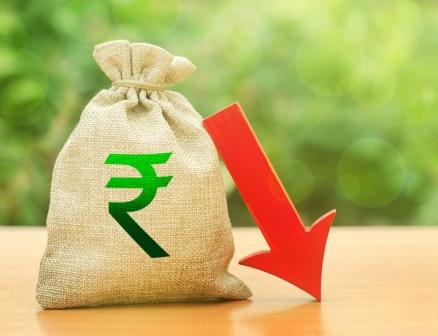For the last few days, we have been heeding that the Indian Rupee (INR) is depreciating heavily — hitting an all-time low of 82 to the US dollar.
The depreciating rupee influences the domestic economy as well as the stock market. For a common man, the domestic currency is a standard medium of money to exchange goods & services, but the exact definition is elusive due to the fluctuation in the value of the currency.
For example, Rs 100 was sufficient to exchange the standard quality of Basmati rice (1 kg) last year, but it is now expensive at Rs 120.
The sustainability and relative value of a currency fluctuates due to several factors such as: change in demand & supply of goods & services, change in the cost of the economy, rise & cut of interest rates, fiscal policy, govt’s anti-inflationary measures, and inflation.
Similarly, this gets reflected in the value of the domestic currency in the global currency market. The exchange rate of the currency reveals the nation’s economic strengths and weaknesses.
It encapsulates the country’s political stability, monetary policy, and, most significantly, the capital flows from exports, imports, FDIs, and FIIs.
As an emerging democratic economy, India has a floating exchange rate system where rates are market-based with minimum interference by the Reserve Bank of India (RBI).
Exceptionally, RBI meddles in the currency market to support the INR during high volatility or during gaps in the availability of foreign currencies, which lead to a fall in forex reserves.
The forex reserves have shrunk to USD 545 billion from the peak of USD 642 billion a year ago due to forex selling by RBI, high imports, and outflow from FIIs.
The recent INR depreciation has surprised the market leading to 10% depreciation in a year, which is double than the normal rate of 4 to 5 per cent annually, raising questions about the strength of the Indian economy.
However, we should note that the world’s other best currencies have also heavily depreciated against the USD. Their cross-currency movements are much more bizarre than INR’s.
For instance, in the past 1year, the UK Pound has depreciated by 21%, the Euro by 19%, the Japanese Yen by 29%, and the Chinese Yuan by 10% (China has a pegged policy to USD rather than a market-based).
This also means that INR has actually appreciated to other currencies like 10% to pound, 8% to Euro, 15% to Yen and 0.4% to Yuan, at the same time.
As a result, we should not be concerned about the current volatility because it is due to global economic & geopolitical uncertainties.
As we have been discussing, India is in a safe position and its currency will rebound firmly as this patch of volatility is dispersed.
However, the ongoing volatility is expected to persist in the short term as the global economy slows in 2022-2023. The same will continue to affect the currency market due to plausible shifts of cross-currencies to USD.
Today, the USD is appreciating against the rest of the world currencies despite fundamental weakness in its own domestic economy.
This is due to the fact that the US economy consistently remains the biggest and most powerful economy, with the benefit of serving as the reserve currency for global commerce & investment.
Thus, USD held to be the world’s haven currency. The ongoing global uncertainties have led to a risk-off policy by global investors.
This leads to selling by foreign investors, which inherently increases demand for USD and supply of other currencies, leading to depreciation.
A reversal will be triggered when the hazardous factors are well factored in the equity market.
This can happen as early as the end of 2022 or delayed to 2023, depending on the firm improvement in geo-political risk, hyperinflation, and global economic growth.
First published in Economic Times








